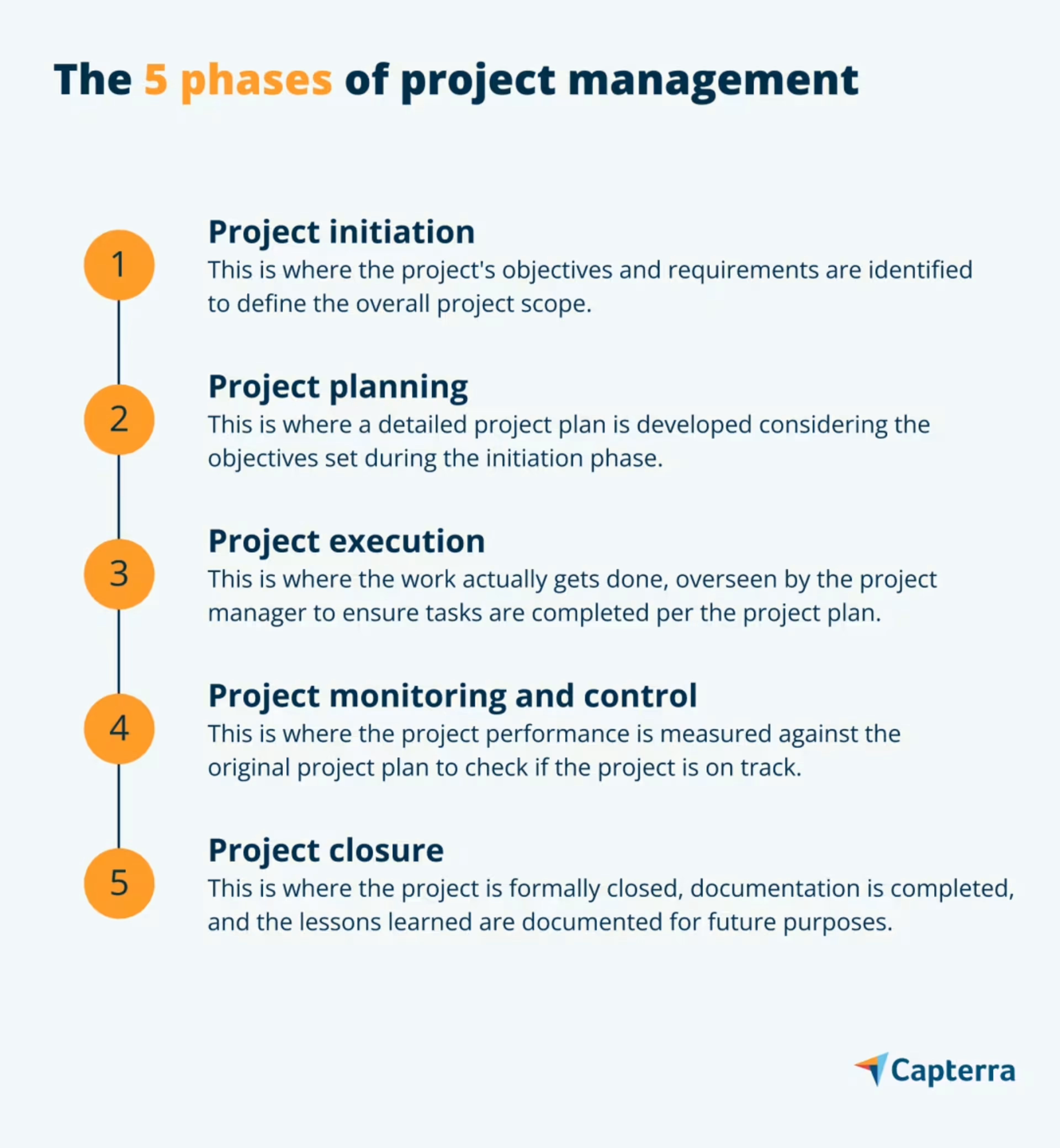Ensure accurate projections by comparing current projects to similar past projects.
As someone involved in project management or cost estimation—particularly in fields like construction, engineering, or software development—you're already aware of how crucial precise cost and time predictions are. Your project's success often hinges on these estimates.
54%* of project managers identified budget management as one of their most significant challenges in the past year. Analogous estimating could be the answer to this prevalent issue. By drawing on historical data, this estimation technique provides you with more accurate project budgets and time estimates, significantly reducing the uncertainties commonly associated with project planning.
For this blog, we've interviewed Peter Koryaka[1] (a project business analyst) and Margarita Kirichenko[2] (a project manager). Both are from Greenice, a custom web development company. They'll share their expertise to shed light on why this project estimation technique could be your solution to cost-estimating hurdles. Stay with us to get actionable insights to make your project planning more efficient and reliable.
"Analogous estimation is like using a trusted family recipe to cook a new dish. You know the ingredients and steps that worked before. You know it's based on proven success, so your chances of a good project outcome skyrocket."


Peter Koryaka
Project business analyst, Greenice
What is analogous estimating?
Analogous estimating is a technique where you leverage the outcomes of past projects to forecast the duration and cost of a current project. Unlike some other methods, it doesn't require complex algorithms or in-depth data. Instead, it offers a quicker, more straightforward way to arrive at budget and schedule estimates based on actual, historical data.
Now, you might be wondering what the output of analogous estimating looks like. It doesn't have a "set" deliverable or end product; it could be as simple as a handwritten note or as formal as a spreadsheet. The key is that you're using this past data as a reference point for your new project.
Whether you jot it down in a notebook or plug it into project management software, the focus is on using real-world data to make your current project estimates more reliable. This approach serves as a great segue into the next section, where we'll discuss hands-on examples that bring this technique to life.
"Think of analogous estimating as your project's 'rearview mirror.' It shows you what's behind, so you can better navigate what lies ahead."


Margarita Kirichenko
Project manager, Greenice
Real-world examples of using analogous estimating in project management
Intrigued by the concept but wondering how it translates to real-world scenarios? Let's delve into hands-on examples that show how this technique can pivot your entire project estimates from shaky to solid.
Koryaka on using analogous estimating in commercial construction: Imagine you managed a construction project to build a two-story commercial building, which took 12 months and cost $1.2 million. Now, you have a project to construct a similar three-story commercial building. By leveraging the analogous estimate, you could approximate that this new project would take about 18 months and cost around $1.8 million.
Kirichenko's insights on software development cost estimation: Suppose you led a software development project for a cloud-based CRM system. The project was delivered in 8 months at a cost of $300,000. Now, you have a project for a similar but more feature-rich CRM system. Using the data from the previous project, analogous estimates would suggest that this new system would require around 10-11 months and a budget of $375,000 to $400,000.
Insightful read: How To Create a Project Plan That Gets Results
When to use analogous estimating method in projects
When is the best time to deploy this nifty tool? There are specific situations where this method is not just helpful but a standout option.
1. Initial project phases
During the early stages of a project, you often have to make decisions with limited information. That's where analogous estimating comes in handy. It provides a good starting point, allowing you to begin planning and secure initial funding.
Using project planning software at this stage can further streamline the process, helping you manage these initial estimates more effectively. As Koryaka suggests, "When you're just kicking off, analogous estimating helps set the stage for more refined estimates later."

2. Smaller projects
For less complex and relatively short-term projects, analogous estimating can save you both time and effort. These are projects where a balanced approach is essential, offering quick yet reliable estimates without the need for deep, granular cost breakdowns. Kirichenko advises, "If your project isn't going to span multiple quarters or involve a wide range of resources, this method can quickly get you the needed numbers."
3. Target industries
This method is often a go-to in the construction, software development, and engineering sectors. These are industries where projects often have comparable elements, making historical data extremely useful. Analogous estimating can help you tap into a rich history of similar projects for more accurate forecasts.
Helpful read: 5 Free Construction Estimating Templates
What are the pros and cons of using analogous estimating?
When it comes to project planning, all tools have strengths and weaknesses. Analogous estimating is no exception. Let's weigh the pros and cons to give you a balanced view.
Basis | Pros | Cons |
|---|---|---|
Speed | Quick to implement, allowing for swift decision-making when you're pressed for time. | Speed can sometimes mean cutting corners, which might lead to less accurate estimates. |
Ease of use | Simple enough that even those new to project management can understand and apply it. | The method's simplicity might make you overlook the unique complexities of a new project. |
Cost-effectiveness | It's a cost-effective method because it uses existing data and requires fewer initial resources for data gathering. | Lower upfront costs may translate to less accuracy, potentially causing budget overruns later. |
Data reliance | Utilizes historical data from previous projects, making your estimates grounded in real-world outcomes. | The quality of your estimate is only as good as the quality of your past data. Incomplete or poor data can lead to incorrect estimates. |
Flexibility | Can be adapted to projects of various sizes and scopes, offering a good degree of flexibility. | May not be suitable for projects that are highly innovative (e.g., developing new technologies or launching a first-of-its-kind service), involve unprecedented challenges, or lack historical data for comparison. |
Even if you do decide that analogous estimating's pros outweigh the cons in your current situation, Kirichenko says it's important to note what might make your new project different from the previous one you're comparing it to.
For example, her team was once asked to develop a mobile app for a healthcare client. They used previous data from a similar project they'd done for a retailer to do the analogous estimate. While they saved some planning time upfront by using this technique, they still had to customize estimates through the project lifecycle.
"It's not a set-and-forget solution," says Kirichenko. "Our healthcare client had specific compliance requirements that our retail client didn't have. We had to adjust our estimates for that. So, it's important to cross-verify the estimates as the project progresses."
A side-by-side look at some common estimating techniques
You might be curious about how analogous estimating fares when compared to other prevalent estimating methods. Let's give you a more in-depth comparison to make your choice easier. We're putting analogous estimating side by side with parametric, bottom-up, and three-point estimating. Here's how they match up on a variety of crucial factors:
Comparative aspects | Analogous estimating | Parametric estimating | Bottom-up estimating | Three-point estimating |
|---|---|---|---|---|
Time required | Quick, often within a day or two | Requires more time, typically a week or so, for data collection and analysis | Can take several weeks due to detailed task analysis | Typically takes about a week; involves collecting multiple estimates |
Accuracy level | Moderate; best for ballpark figures | High; uses statistical models for precise estimates | Extremely high; detailed task-level scrutiny | High; averages worst and best-case scenarios |
Complexity of the method | Low; involves using historical data as a base | Moderate; requires statistical models and databases | High; needs a detailed breakdown of every task and subtask | Moderate; needs three estimates for each task (optimistic, pessimistic, most likely) |
Associated costs | Generally low; minimal data collection involved | Moderate; may need specialized software for data analysis | High; labor-intensive, may require additional team members | Moderate; requires time for multiple estimates but not specialized software |
Best suited for | Ideal for early project stages or smaller projects where quick estimates are beneficial | Best for well-defined projects with abundant historical data that also allows for statistical analysis to provide highly precise estimates | Most effective for complex projects requiring granular analysis | Works well for projects with a higher degree of uncertainty or variable tasks |
Resource needs | Minimal; primarily historical data and basic expertise required | Specialized statistical expertise often needed, along with access to robust databases | A comprehensive team is often needed for task-level analysis | Requires a team comfortable with providing multiple estimates and a process for reconciling them |
Koryaka offers an interesting perspective on the versatility of analogous estimating: "This approach is particularly useful for those just starting a new project or juggling multiple responsibilities. It provides immediate, albeit broad, insights that can be refined as the project progresses, making it a flexible tool for different stages of project management."
So, when weighing your options, consider what stage you’re at and what resources you have at your disposal. Analogous estimating serves well as a fast, initial approximation tool, leaving room for more exact methods as your project progresses.
Insightful read: Burndown Chart Explained by a Seasoned Project Manager
Turn knowledge into action: Use analogous estimating for future success
You've delved into the practical details of analogous estimating—a vital technique for making educated guesses about project timelines and costs. But what's next? How do you take this valuable knowledge and apply it in a way that spells success for your future projects? The answer lies in a solid project plan that's designed with analogous estimating in mind.
To make your transition from "knowing" to "doing" seamless, here’s a bonus downloadable project plan template for better estimation. It's structured to guide you in considering all the variables, ultimately improving the reliability of your estimates and the success rate of your projects.
